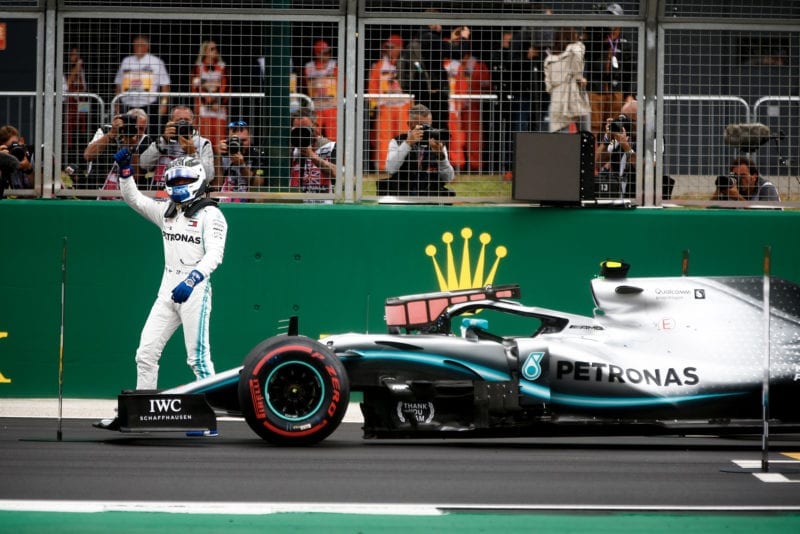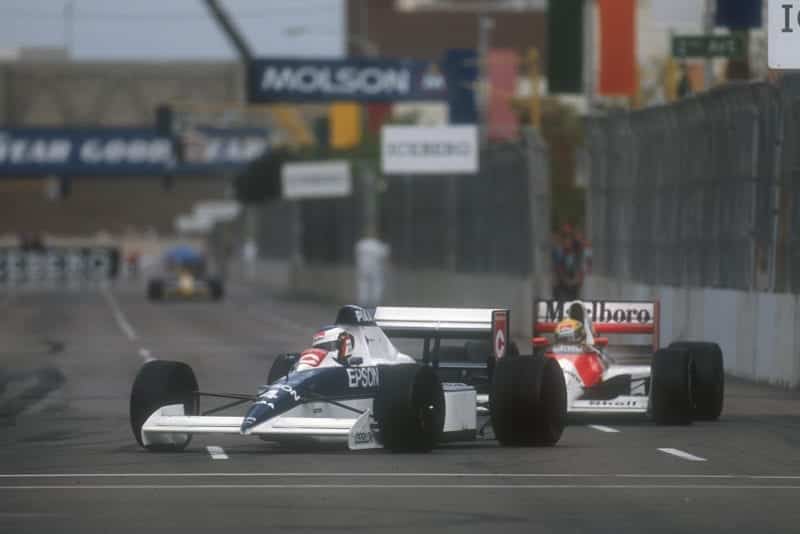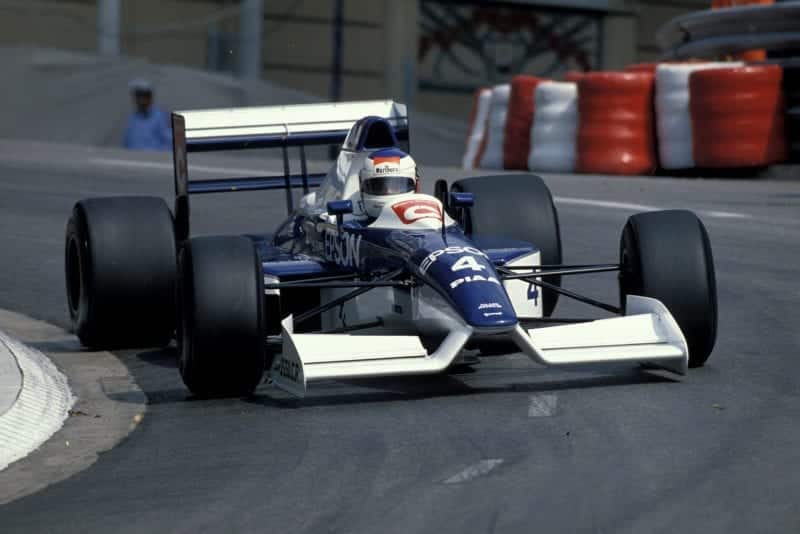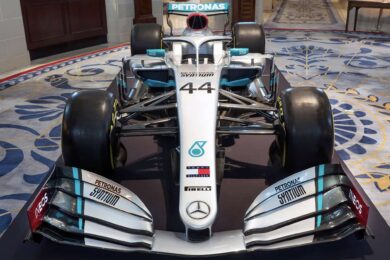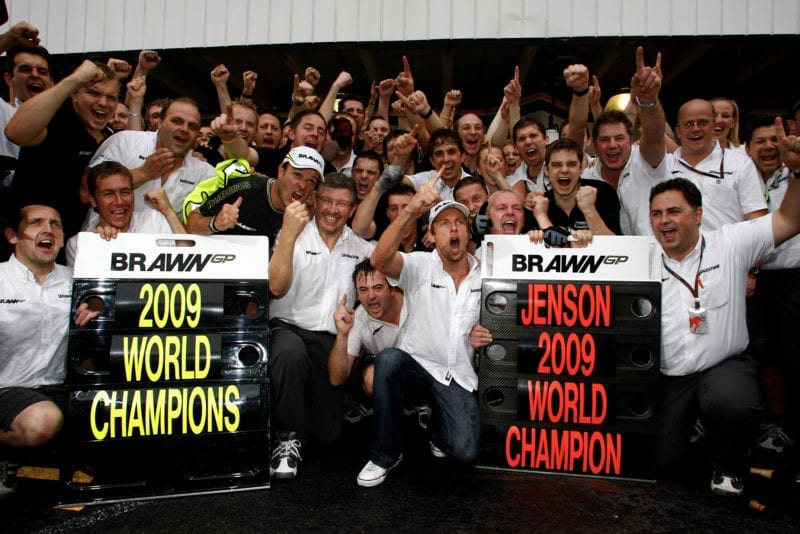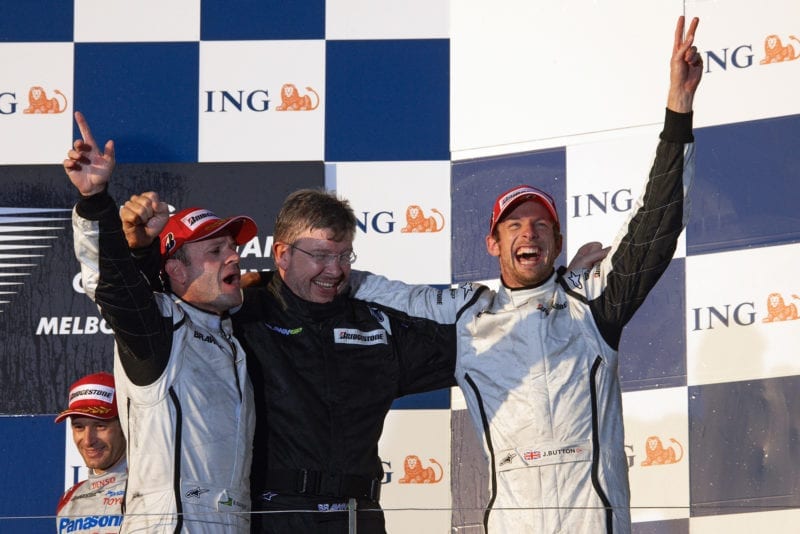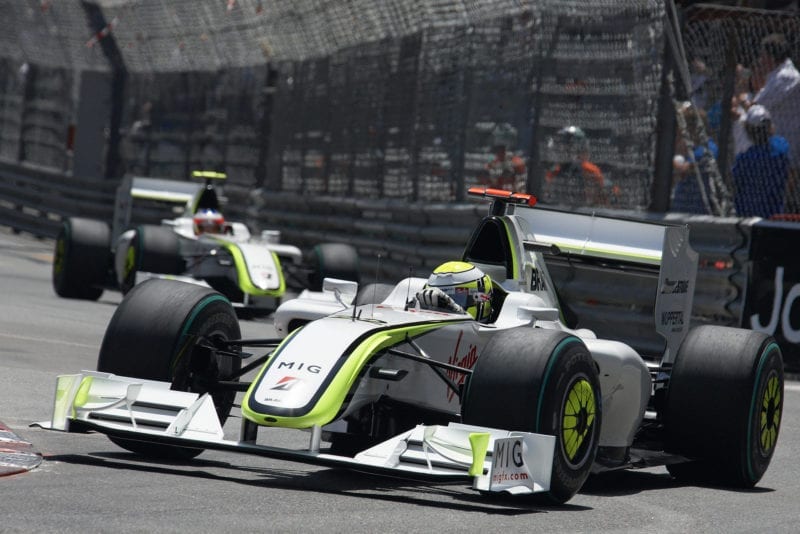But the 019, the pukka 1990 car, took the aero principles of the 018 a big step forward. Rather than just raising the nose, Migeot raised the whole front of the car, including the cockpit. “As soon as I saw it I realised that’s what I should have done,” said Newey. “It took the concept to its logical conclusion.” The 019 had massively more volume of air being fed to the underbody than the traditional low-nose cars still being run by McLaren and Ferrari. Only the car’s power deficit prevented it from dominating those teams. Alesi scored another second place with it at Monaco but iffy reliability and a few rookie errors meant Tyrrell scored only fifth in the constructors championship and by the following season the top teams had understood the Tyrrell’s advantage. But it had been great, heady stuff while it lasted.
1999-2000: BAR
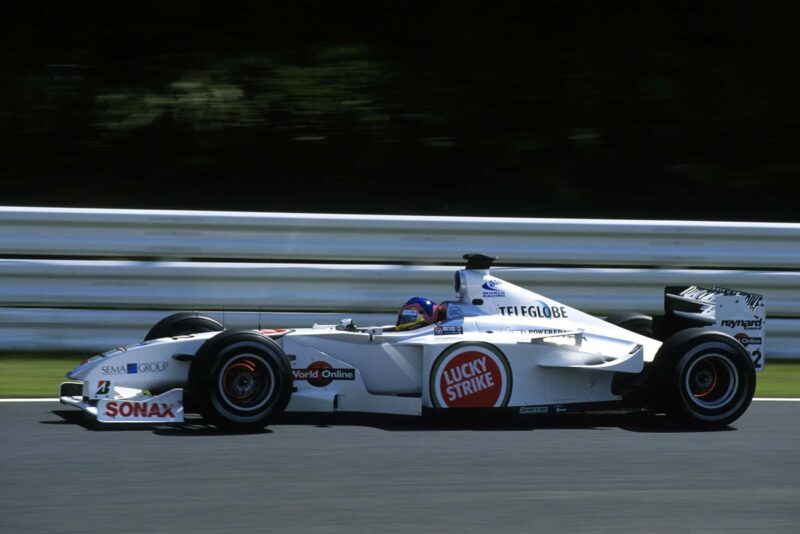
Villeneuve’s BAR 002
The Craig Pollock-led, BAT-sponsored, consortium had bought-out Ken Tyrrell in 1998. In ’99 the team had relocated to Brackley in Northamptonshire, where it remains to this day. With the help of Reynard it had produced the BAR 001, a so-so car in which Jacques Villeneuve failed to score a point. But at least the team, instead of dwindling away to extinction, was now properly financed and expanding.
For 2000, things were stepping up. Honda was returning as BAR’s partner. This had always been the plan and ’99 had been contested with a customer engine to get the team established and ready for Honda’s official re-entry after withdrawing at the end of ’92. There was a buzz about the prospect, despite the difficult first season as BAR. The BAR 02, vice-less but hardly cutting edge, would go on to score regular fourth places in Villeneuve’s hands, putting the team fifth in the constructors’ championship.
2009-2010: Brawn GP
There has surely never been a more dramatic off-season story than that which had unfolded over 2008-09 at Brackley – as Honda, spooked by the banking crisis and dramatic reduction in car sales, pulled out of F1 without warning, and team principal Ross Brawn put together an unlikely management rescue plan. Even more fairy tale, as Brawn Grand Prix, it won the 2009 world championship with Jenson Button and Mercedes engines.
There’d been the brief promise of 2004 but Honda and the BAR team never had properly gelled and Honda had bought it outright to run as the Honda works team from 2006 onwards. Many managerial and technical changes had unfolded as Honda’s ambitions had not been met, with only Jenson Button’s victory in Hungary 2006 to show for all those years of toil. Two consecutive awful cars in 2007 and ’08 confirmed the technical disarray, but Ross Brawn had been hired to turn things around, something he would do dramatically, albeit not quite in the way envisaged.
